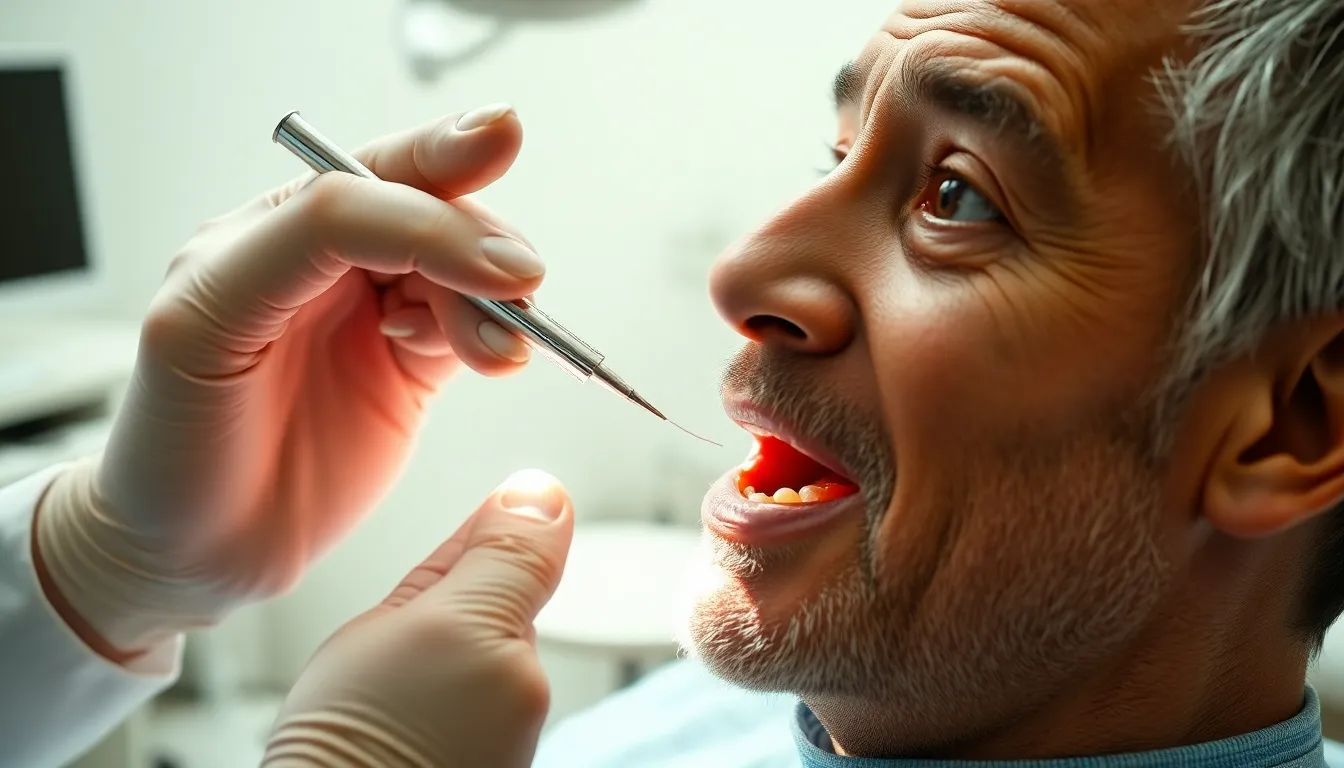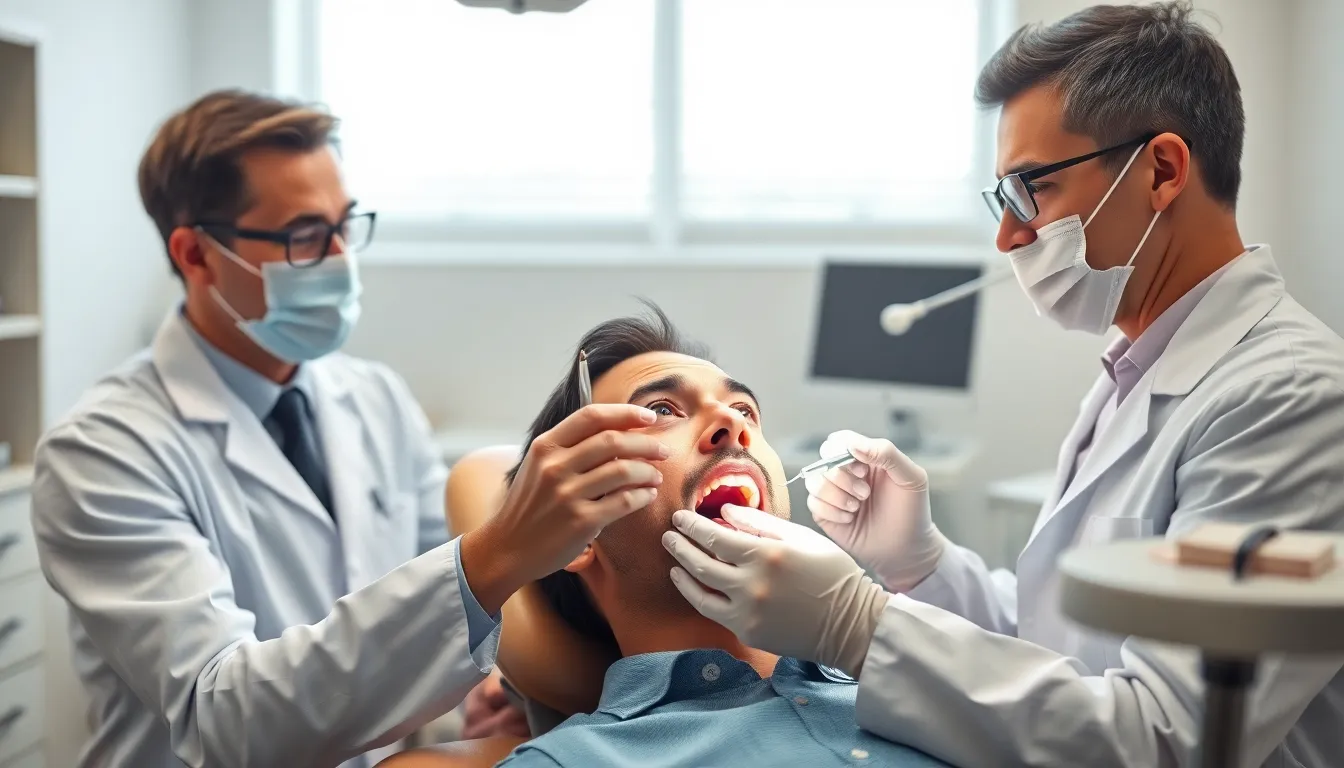Ever wondered how to unlock your jaw when it feels stuck or tight? That uncomfortable sensation when you can’t fully open your mouth can be both painful and concerning, but there are effective techniques to find relief.
Jaw locking—medically known as temporomandibular joint (TMJ) disorder—affects millions of people worldwide. Whether you’re experiencing this issue after yawning too widely, from grinding your teeth at night, or due to stress-related tension, understanding how to safely unlock your jaw is essential. In this guide, you’ll discover proven methods to release jaw tension and prevent future episodes without causing further damage.
Understanding Jaw Lock: Causes and Symptoms
Jaw lock occurs when your temporomandibular joint (TMJ) becomes stuck, making it difficult or impossible to fully open or close your mouth. The TMJ connects your jawbone to your skull and acts as a sliding hinge, allowing you to talk, chew, and yawn. Recognizing the root causes of jaw lock helps you address the condition effectively and seek appropriate treatment.
What Causes a Locked Jaw?
Several factors contribute to jaw locking episodes, with TMJ disorders being the primary culprit. Muscle tension around the jaw often triggers these episodes, particularly in patients who experience chronic stress. Teeth grinding (bruxism) during sleep or throughout the day damages the joint over time, leading to inflammation and restricted movement.
Physical trauma to the face or jaw from accidents or sports injuries can displace the jaw disc or damage surrounding tissues. Arthritis—especially rheumatoid arthritis and osteoarthritis—frequently affects the TMJ, causing pain and limiting mobility as cartilage deteriorates. Structural abnormalities present from birth or developing during growth sometimes predispose individuals to jaw locking.
Dr. Todd B. Harris notes, “Many of my patients don’t realize their daily habits contribute significantly to their jaw problems. One patient, Sarah, experienced recurrent jaw locking until we identified her nighttime teeth grinding and implemented a custom mouthguard, which resolved her symptoms within weeks.”
Common Symptoms of Jaw Lock
TMJ disorders manifest through various symptoms beyond the obvious inability to open or close your mouth normally. Pain radiates from the joint to your ears, face, and neck, often intensifying during jaw movement. Clicking or popping sounds occur when opening your mouth or chewing, indicating disc displacement within the joint.
Facial swelling around the jaw area visibly appears during acute episodes, sometimes accompanied by warmth to the touch. Headaches concentrate at the temples and forehead, frequently mistaken for tension or migraine headaches. Difficulty eating affects nutrition as patients struggle to chew properly or open wide enough for certain foods.
Ear-related symptoms include ringing (tinnitus), fullness sensation, and hearing changes without actual ear infection. Limited jaw mobility restricts normal functions like speaking, yawning, or brushing teeth effectively. Muscle spasms occur in the jaw, face, and neck as surrounding muscles attempt to compensate for joint dysfunction.
Risk Factors for Developing Jaw Lock
Certain demographics face higher risks for TMJ disorders. Women between 20-40 years old experience jaw locking at significantly higher rates than men, suggesting hormonal influences. Individuals with connective tissue disorders like Ehlers-Danlos syndrome have naturally more flexible joints susceptible to displacement.
Stress-prone personalities frequently develop jaw tension and clenching behaviors that strain the TMJ. Poor posture—particularly forward head posture—places additional stress on jaw muscles and joints. Previous orthodontic work occasionally creates bite alignment issues contributing to TMJ strain over time.
Dental procedures requiring prolonged mouth opening sometimes trigger jaw locking episodes in predisposed individuals. Sleep disorders correlate strongly with TMJ problems, as disrupted sleep patterns increase muscle tension throughout the body. Nutritional deficiencies, particularly magnesium and calcium, potentially contribute to muscle dysfunction around the jaw.
What Is Temporomandibular Joint Disorder (TMJ)?

Temporomandibular Joint Disorder (TMJ) affects the jaw joint and muscles controlling jaw movement. This condition involves dysfunction or misalignment of the temporomandibular joint connecting your jawbone to your skull, resulting in various uncomfortable symptoms.
Common Triggers of Jaw Locking
Jaw locking often stems from several identifiable triggers that disrupt normal TMJ function. Improper jaw movements during everyday activities like chewing, yawning, or talking can strain the joint and lead to locking episodes. Muscle spasms or tension in the jaw muscles frequently contribute to this problem, creating resistance when you try to open or close your mouth.
Stress plays a important role by causing unconscious muscle clenching or teeth grinding (bruxism), putting excessive pressure on the TMJ. Physical trauma or direct injury to the jaw area can damage the joint structure, increasing your risk of experiencing locking sensations. Joint inflammation or disc displacement within the TMJ represents another common trigger, where the cushioning disc between bone components becomes displaced.
One of our patients, Sarah, experienced severe jaw locking after a period of heightened work stress. “I couldn’t open my mouth more than a finger’s width,” she reported. “The clicking sound whenever I tried to eat was not only painful but embarrassing in social situations.” Her case illustrates how emotional factors can manifest as physical TMJ symptoms.
TMJ disorders can cause various symptoms beyond jaw locking, including persistent jaw pain, noticeable clicking or popping sounds during movement, recurring headaches, and difficulty fully opening or closing your mouth. The condition ranges from mild discomfort to debilitating pain that interferes with daily activities like eating and speaking.
Immediate Self-Help Techniques to Unlock Your Jaw

When your jaw locks unexpectedly, several proven techniques can help restore normal function without medical intervention. These methods focus on relaxing tense muscles and gently encouraging proper jaw alignment through targeted approaches.
Gentle Massage Methods
Massaging the jaw area effectively releases tension and promotes muscle relaxation when dealing with a locked jaw. Place your fingers on both sides of your jaw joints and apply gentle, careful pressure in circular motions for 2-3 minutes to improve blood flow and reduce muscle tightness. After massaging, try moving your jaw slowly from side to side to regain mobility. Combining massage with relaxation techniques enhances results—practice deep breathing while massaging to help calm your nervous system and further relax jaw muscles.
Dr. Todd B. Harris notes, “Many of my patients find that gentle self-massage techniques provide immediate relief from jaw locking episodes. The key is applying consistent but gentle pressure without forcing the jaw to move beyond its comfortable range.”
Performing small mouth-opening exercises serves as an excellent warm-up before attempting more targeted techniques. Place your fingers on your lower front teeth and gently pull downward until you feel slight resistance, hold this position for 30 seconds, then slowly release to encourage natural unlocking.
Heat and Cold Therapy
Heat therapy relaxes tight jaw muscles by increasing blood flow to the affected area. Apply a warm compress to your jaw for 10-15 minutes to reduce muscle spasms and prepare the joint for gentle movement. This method works best when used multiple times throughout the day, particularly before attempting massage or stretching exercises.
Cold therapy serves a different purpose in treating jaw lock situations. While heat relaxes muscles, cold packs reduce inflammation if swelling contributes to your jaw discomfort. Apply an ice pack wrapped in a thin cloth for 10 minutes, removing it for 10 minutes, then reapplying if needed.
Sarah, a long-term TMJ sufferer, shares her experience: “I’ve found alternating between heat and cold provides the most relief during my worst jaw locking episodes. I start with heat to relax the muscles, then finish with cold to address any inflammation. This combination has prevented many potential emergency dental visits.”
Remember to stay calm throughout these techniques, as stress and anxiety often worsen jaw tension. Avoid applying excessive force while attempting to unlock your jaw to prevent potential injury or additional pain. If your symptoms persist beyond 3-4 days even though trying these methods, consulting a TMJ specialist becomes necessary for professional assessment and treatment.
Professional Treatment Options

Professional treatment options provide effective answers when self-help techniques fail to unlock your jaw. These specialized interventions address underlying causes of TMJ disorders through targeted approaches delivered by medical and dental professionals.
Medical Interventions
Jaw manipulation under anesthesia offers immediate relief for many patients with locked jaws. During this procedure, your doctor injects an anesthetic into the temporomandibular joint to numb the area before carefully manipulating the jaw to restore mobility. Dr. Hitesh Patel’s technique often requires multiple sessions to achieve optimal results while minimizing discomfort.
Arthrocentesis uses small needles inserted into the joint to flush out inflammatory byproducts and debris. This minimally invasive procedure effectively reduces inflammation and improves jaw movement for patients with acute locking.
Various injection therapies target different aspects of jaw locking problems. Corticosteroid injections directly into the joint reduce inflammation, while Botox injections relax overactive chewing muscles that contribute to locking episodes.
Surgical options become necessary in cases that don’t respond to conservative treatments. Arthroscopic surgery employs a tiny camera inserted into the joint to perform repairs with fewer complications than traditional approaches. Open-joint surgery remains reserved for severe structural issues requiring joint repair or replacement.
Prolotherapy represents an emerging treatment option for certain TMJ patients. This technique strengthens the joint through strategic injections of answers containing dextrose and lidocaine around the TMJ capsule and tendons, particularly helpful for subluxation cases.
Dental Answers
Bite guards and splints correct misalignments that contribute to jaw locking episodes. These custom-fitted devices prevent teeth grinding and clenching while promoting proper jaw positioning during sleep and stressful situations.
Joint mobilization techniques performed by dental professionals help release restricted movement. Your dentist gently manipulates the jaw to break up adhesions and restore normal function through exact movements designed to increase mobility.
Surgical removal of adhesions becomes necessary when sticky tissue formations severely restrict jaw movement. These precise procedures target only the problematic adhesions while preserving healthy joint structures.
“I had suffered from recurring jaw locks for years until my dentist created a custom splint,” shares Jennifer, a long-term TMJ patient. “Within weeks, my episodes decreased dramatically, and I finally got relief after trying countless over-the-counter answers.”
Advanced dental imaging helps identify the exact cause of your jaw locking. Modern techniques like cone beam CT scans provide detailed views of bone and joint structures, allowing your treatment provider to develop more targeted intervention strategies.
Prevention Strategies for Recurring Jaw Lock

Preventing jaw lock recurrences requires consistent habits and lifestyle adjustments. These strategies focus on reducing strain on your temporomandibular joint and supporting overall jaw health.
Stress Management Techniques
Stress directly impacts jaw tension and can trigger TMJ flare-ups. Regular relaxation exercises effectively decrease muscle tension in your jaw muscles. Try incorporating meditation into your daily routine, even if it’s just 5-10 minutes each morning. Deep breathing exercises specifically target the physiological stress response that contributes to jaw clenching. Many patients report important improvement after adopting consistent stress management practices.
Lisa, a marketing executive who suffered from recurring jaw lock, shared: “I never connected my high-stress job with my jaw problems until my TMJ specialist pointed it out. After incorporating daily meditation and mindfulness practices, my episodes decreased by about 70% within two months.”
Becoming aware of teeth clenching or grinding, especially during stressful situations, allows you to consciously relax your jaw. Place your tongue between your teeth as a physical reminder to keep them slightly apart throughout the day. Setting reminders on your phone can help build this awareness until it becomes habitual.
Dietary Modifications
Your food choices significantly impact jaw health during recovery and prevention. Soft foods minimize strain on jaw muscles and joints during flare-ups or after experiencing a locked jaw. Create meal plans including yogurt, scrambled eggs, smoothies, mashed potatoes, and well-cooked pasta that require minimal chewing effort.
Avoid foods that require excessive jaw movement or force, such as:
- Tough meats that demand prolonged chewing
- Crunchy snacks like popcorn or hard pretzels
- Chewy items such as bagels or caramels
- Large food items requiring wide mouth opening
Cutting food into smaller pieces reduces the amount your mouth needs to open while eating. Taking smaller bites and chewing slowly puts less stress on your TMJ throughout meals. Maintaining proper hydration supports muscle function around your jaw, potentially reducing spasm risk.
Caffeine reduction often helps TMJ patients, as it can contribute to muscle tension and teeth grinding. Consider limiting coffee, tea, and energy drinks, particularly in the afternoon and evening hours when they might affect sleep quality and increase nighttime grinding.
When to Seek Emergency Medical Help

A locked jaw that persists after attempting home remedies requires prompt medical attention. Seeking professional help within days significantly improves your chances of restoring normal jaw function. Your TMJ specialist might recommend treatments like orthotics, physical therapy, injection therapy, or Botox after inflammation subsides.
Contact emergency medical services immediately if you experience:
- Severe, unbearable pain that doesn’t respond to over-the-counter pain relievers
- Complete inability to open or close your mouth for eating or speaking
- Difficulty breathing related to jaw positioning
- Signs of infection such as fever, swelling, or redness around the jaw
- Jaw locking following trauma or injury to the face
- Sudden changes in your bite alignment
Emma, a 34-year-old marketing executive, ignored her locked jaw for nearly two weeks, thinking it would resolve on its own. “By the time I finally went to the ER, I had developed important inflammation and needed extensive treatment. The specialist told me that seeking help earlier would have made recovery much simpler and faster.”
Medical professionals evaluate locked jaws using specialized diagnostic techniques to determine the exact cause. X-rays, CT scans, or MRIs may be necessary to visualize the joint structures and identify whether the issue stems from disc displacement, arthritis, or other structural problems requiring exact interventions.
Remember that persistent jaw locking isn’t just an inconvenience—it’s a medical condition that can worsen without proper treatment. Early intervention prevents long-term complications including chronic pain, permanent mobility limitations, and deterioration of the joint structures.
Conclusion
Unlocking your jaw requires understanding both immediate relief techniques and long-term prevention strategies. Whether you’re experiencing occasional jaw tightness or dealing with chronic TMJ disorder you now have practical tools to address this painful condition.
Remember that gentle self-care methods like massage and heat therapy often provide quick relief while professional treatments offer answers for persistent problems. Don’t hesitate to seek medical attention when self-help measures fail especially if you experience severe symptoms.
By implementing stress management techniques maintaining proper jaw posture and making dietary adjustments you’ll significantly reduce your risk of future episodes. Your jaw health directly impacts your quality of life and taking proactive steps today can prevent discomfort tomorrow.
Frequently Asked Questions
What is jaw locking or TMJ disorder?
Jaw locking, or temporomandibular joint (TMJ) disorder, occurs when the jaw joint becomes stuck, making it difficult to open or close your mouth. This condition affects the joint and muscles controlling jaw movement, causing pain that can radiate to the ears, face, and neck, along with clicking sounds, facial swelling, headaches, and limited jaw mobility.
What causes a jaw to lock up?
Jaw locking can be caused by several factors including TMJ disorders, muscle tension from chronic stress, teeth grinding (bruxism), physical trauma to the jaw, arthritis, and structural abnormalities. Improper jaw movements during activities like chewing, muscle spasms, stress-induced clenching, and joint inflammation are common triggers.
Who is most at risk for developing jaw lock?
Women aged 20-40 are more commonly affected by jaw locking. Other risk factors include having connective tissue disorders, stress-prone personalities, poor posture, history of orthodontic work, sleep disorders, and nutritional deficiencies. These factors can contribute to muscle dysfunction around the jaw area.
What are the immediate self-help techniques for a locked jaw?
For immediate relief, try gentle jaw massage to release tension, apply heat or cold therapy to alleviate discomfort, and practice staying calm to prevent further muscle tension. Use gentle movements without excessive force. These techniques can help relax jaw muscles and reduce pain without medical intervention.
When should I seek emergency medical help for a locked jaw?
Seek immediate medical attention if you experience severe pain, inability to open or close your mouth, difficulty breathing, signs of infection (fever, swelling), or jaw locking following trauma. Persistent jaw locking that doesn’t respond to home remedies within a few days also warrants professional evaluation.
What professional treatments are available for jaw locking?
Professional treatments include jaw manipulation under anesthesia, arthrocentesis (joint fluid removal), injection therapies (corticosteroids or Botox), dental solutions (bite guards, splints), and physical therapy. For severe cases, surgical options like arthroscopic or open-joint surgeries may be necessary.
How can I prevent recurring jaw lock?
Prevent recurring jaw lock through stress management techniques like meditation and deep breathing exercises, maintaining proper posture, avoiding excessive jaw movements, and dietary modifications. Eat soft foods to minimize jaw strain and reduce caffeine intake to decrease muscle tension.
Can TMJ disorder cause symptoms beyond jaw locking?
Yes, TMJ disorder can cause persistent jaw pain, clicking or popping sounds, facial pain, ear pain, headaches, difficulty chewing, and limited mouth movement. These symptoms can significantly interfere with daily activities like eating, speaking, and sleeping, affecting overall quality of life.







